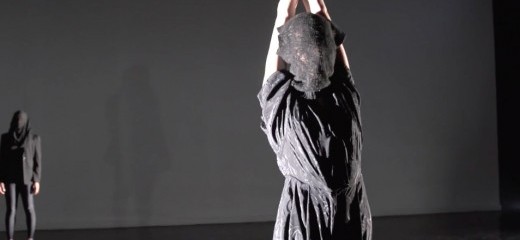
anonymous bodies art collective
Baggage Attached: An Interview with Kate Watson-Wallace
by Whitney Weinstein
Statements to keep in mind while watching Kate Watson-Wallace’s Mash Up Body this weekend:
Watch and be watched.
Let your gaze linger.
Consider your identities.
Validate others’ identities.
Connect your world from the inside out.
WW: Tell me about your background in dance.
KW: Right now I’m identifying as a visual performance artist. I come from a lineage of contemporary and postmodern dance training,
Judson Church, and that line of research and thinking. I’m the only choreographer in [a graduate] program [for studio art], but there are other performance artists. I’m contextualizing my work more within the visual arts realm. I’ve always felt more like a visual artist than a choreographer.
WW: How does being a visual artist differ from being a choreographer?
KW: It gives me more freedom to express myself, doesn’t limit me to only making dances. Mash Up Body is very much a dance, but lives within an installation. I think of it more as a set of physical states or psychic spaces than a choreography.
WW: Talk about your journey towards creating Mash Up Body.
KW: My research questions have to do with my experience as a woman moving through the world and navigating gaze—that awkward, sometimes gendered (sometimes not), negotiation of the process of being seen and seeing.
After 25 years of training that was always about new, different, other, I’m more interested now in the things that keep coming back, and which have to do with negotiating gaze. I’m thinking about what goes on inside of us and what we present to the world in terms of gender, class, race, weight, sexuality. I think how that complicated mess of things manifests and becomes who we are. I’m a big
bell hooks fan. [These] things are in conversation with one another. There are a series of systems and institutions that are not in support of me and most of my community. We have to fight.
I’m also thinking about how people in the art world love to say “Is your experience authentic?” I wanted to unpack that. We’re all in drag, just wearing different kinds of drag for the public. I don’t think that’s bad or inauthentic. But there’s a point in certain performances when you can get to your authentic self. What is that?
The dance world has this saying, “Leave your baggage at the door.” There’s no way for me to leave my baggage at the door. So I’m providing a space where people can, through humor, come into their trauma—or not—or just their experience, and for me to respect the people I work with, have an open dialogue.
WW: How did all of these ideas take form in Mash Up?
KW: I started making the piece in 2012 with five dancers, including me, and working with Chris Powell, the composer. I wanted to think about appropriation of different ways that we use dance to present ourselves to the world. That’s where Mash Up came from: literally a mashing up of forms and different cultural lineages. This idea of remaking was very much in my generation.
I have a slightly different cast now, bringing different energies. I’ve intentionally cast a wide range of dancers [with experiences from voguing to burlesque, whacking to contemporary]. They bring a smorgasbord of cultural practices. It gets messy and that’s what I like about it.
The reason I’m an artist is because I’m interested in the complicated and unpredictable ways that large cultural questions can be answered. I think dance, more than a lot of forms, can do that in a very exquisite way because it’s embodied: you’re dealing with real people. I’m inspired by
Tere O’Connor when he talks about choreography as its own language. It’s a set of systems that replicate the way the mind works. So, the way that the mind is messy, human interaction is messy, real life is messy—dance has an ability to source that.
WW: So you created a dance, which is the first part of the show. Then you had your dancers remix that?
KW: Remixing is really hot now, but I wouldn’t emphasize it so much. I would describe the whole thing as a continuum created by the dancers. The second half is based on improvisation. There’s a structure, but the question is always, "How much of an improv should it be?"
WW: How has a new cast influenced the work?
KW: The work is stronger. The group is more cohesive. I’m more focused now that I’m outside of the work. I took scissors to the whole show and threw away half the piece. Then I went back to rehearsal videos from three years ago and had the dancers remake it. We worked a lot in this sort of state-shifting, or moving between physical states (according to Cori Olinghouse), but also putting different states out in the world. You have a chance to go into your body and see where it takes you.
I’ve worked a lot with open canvas, which I’ve learned through the
Pig Iron people, and that’s how the second half of the dance was created: you take the dance and then make something new based on that information.
WW: Do you ever find yourself struggling with varied perspectives that are not blending together?
KW: I find that very interesting. As director, I’m still participating within a hierarchy, which I’m okay with. The whole thing is a collaboration. I am still very much composing with the material they’re giving me.
WW: Is there anything else you want the world to know about Mash Up?
KW: Come with an open mind. The intimacy is important. I like feedback!
By Whitney Weinstein
June 4, 2015

